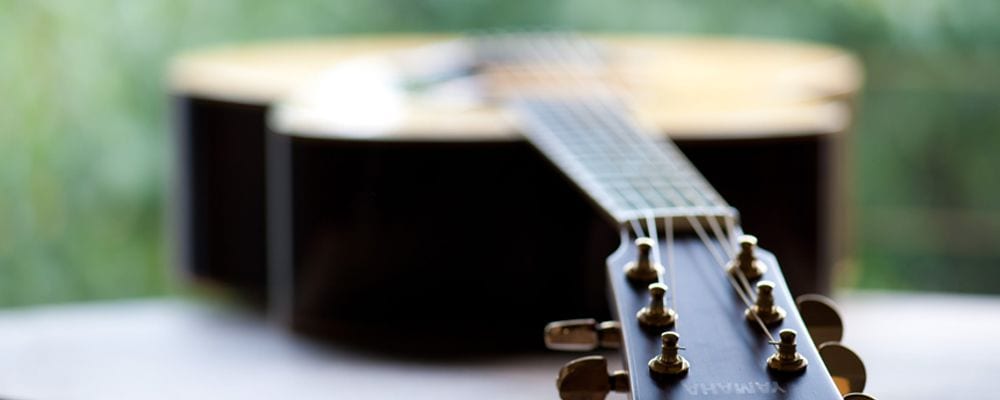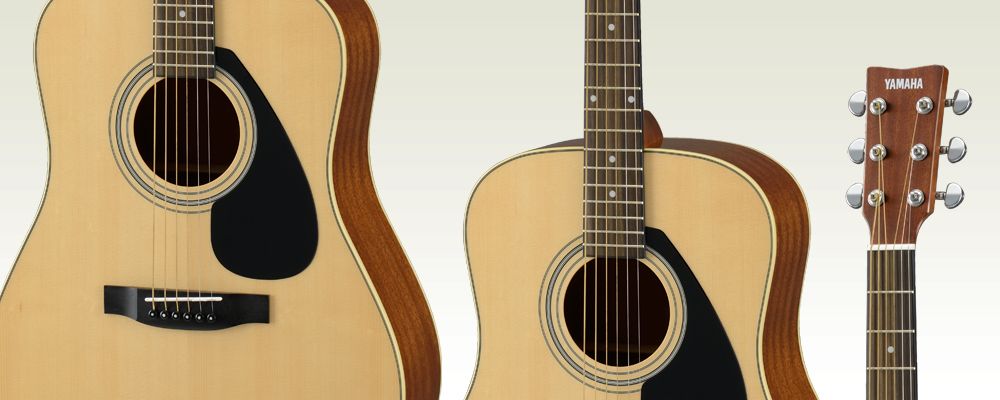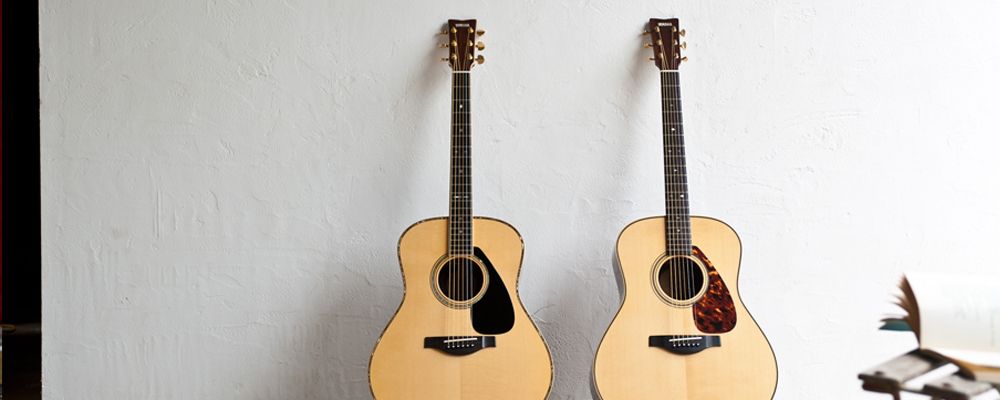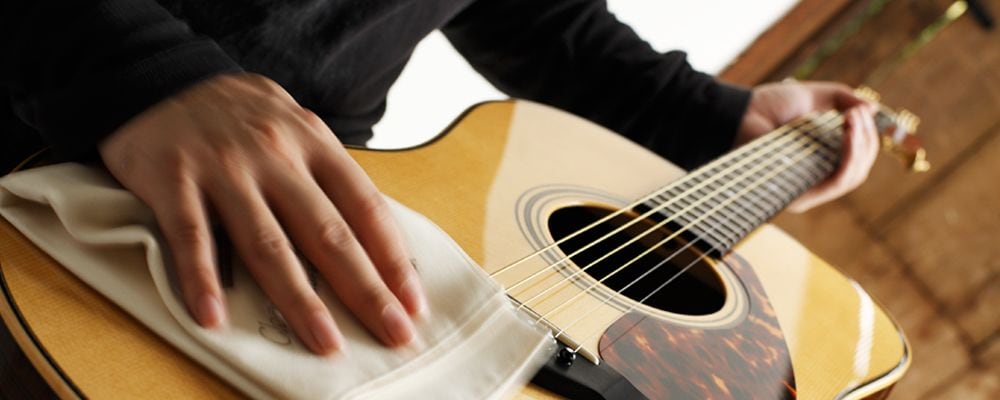Trivia
The guitar top is actually two panels stuck together
The guitar top is actually two panels stuck together
Take a close look and you should notice that the wood grain on the guitar top is symmetrical. This is also true for the back and sides, because guitars should ideally use the same material in order to transmit sound evenly. Two planks are taken from the same location in the trunk and -like an open book- the planks are lined up horizontally and attached. This is particularly true for the top and back, where the parts of the wood where the growth rings are most concentrated (i.e. toward the outside of the trunk) are brought together toward the center of the instrument. This is called "bookmatching."
Collector's item with a modern Japanese style

Collector's item with a modern Japanese style
This guitar boasts a bright Japanese design, featuring a mother-of-pearl inlay formed by inlaying shiny pearl gray parts cut from shells, and gold-embossed lacquerwork. The impressively beautiful guitar in the photo features a mountain cherry design, with flowers running up the fingerboard and head. John Lennon is also said to have had a mother-of-pearl dragon guitar made custom for him.
Why do the spaces between frets grow narrower down the neck?
Why do the spaces between frets grow narrower down the neck?
The spaces between frets on the neck grow narrower the closer to the body they are. Why is this? Each time you move one fret away from the body, the pitch increases by a semitone. A very simplified way to calculate how much a string should be shortened in order to raise its pitch a semitone is to take the original length of the string and multiply it by 0.944. Therefore, the amount that the width must by shortened to increase the pitch a semitone gets smaller the higher you go in the range (i.e. the shorter the vibrating portion of the string is), and the space between frets get narrower.
Of course, this is only a theoretical number. In reality, a variety of factors (such as tension offset) must be considered and a much more complicated formula is used to calculate the positions of frets.
The shape of the pick guard is important feature of each manufacturer
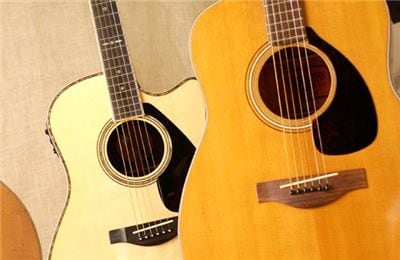
The shape of the pick guard is important feature of each manufacturer
You may know that pick guards serve to protect the top from being scratched by the pick. Did you also know that the shape of the pick guard varies by manufacturer? Those in the know can identify the manufacturer of a given guitar during close up shots of the guitarist's hands.
Cutaways make it easier to access upper frets

Cutaways make it easier to access upper frets
As the name suggests, a cutaway in a guitar refers to an indentation that looks like a part of the guitar was "cut away" from the body. With this type of guitar, the body is shaped so that the left hand can more easily access the positions closer to the body. This allows a guitarist to easily reach the 20th position right next to the sound hole. However, the sound suffers to some degree due to the indentations in the body. Of course, this does not pose any problem at all for an electric guitar or electric acoustic guitar.
The order guitars and violins are strung is different

The order guitars and violins are strung is different
Guitar strings are typically strung in order of low E, A, D, G, B, then high E. A perfect fourth (i.e. the interval between C and F) exists between each note (although the interval between G and B only is narrower [major third]). However, even though violins are also stringed instruments, their strings are strung in order (from low to high) of G, D, A, and E. This is the exact opposite order of strings 3 through 6 on a guitar, with a perfect fifth (i.e. the interval between C and G) between each note. This is because violins are played completely differently from guitars, which are fingered. Incidentally, mandolins (which have eight strings) are strung with four groups of two strings, with each pair having the same thickness and pitch. These instruments have the same note intervals as violins.

